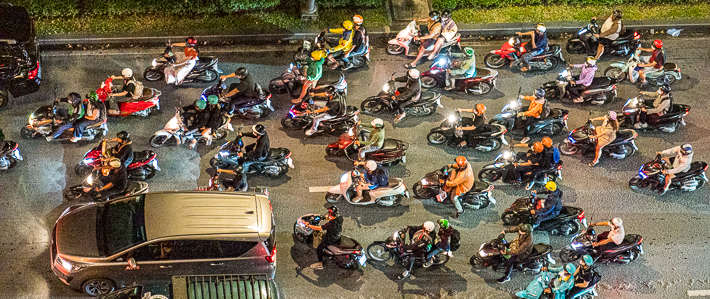
Here is a photo of the motorbike traffic below our hotel room in Ho Chi Minh City (aka Saigon)– it was madness. Hanoi and Ho Chi Minh City were the only two cities where the guide had to show us how to safely cross the street. There were so many vehicles that to cross the street, the guide would have us line up horizontally in a line, almost holding hands, then walk at the same pace to cross the street. This way, the motorbikes could pass us in front or behind us without missing a beat and without putting on their brakes.
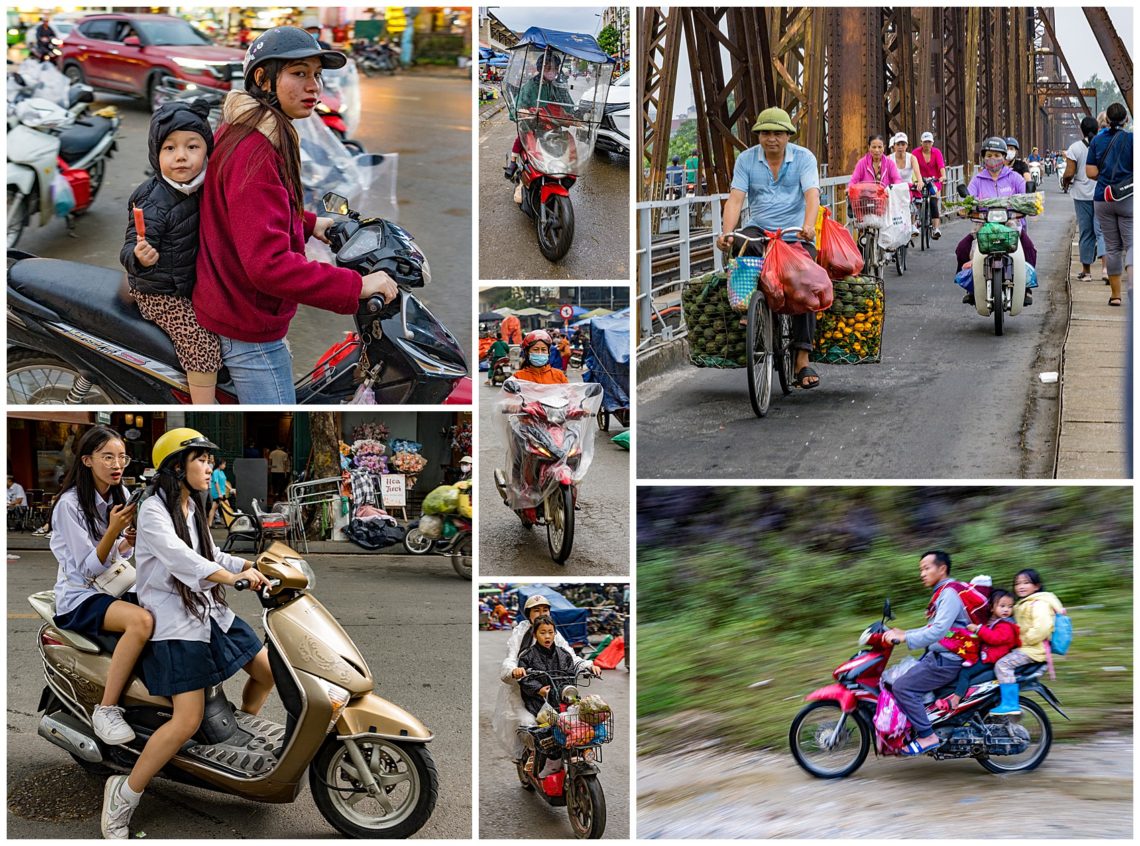
Motorbikes are the transportation preference of choice on the crowded streets of Vietnam. It is normal to see entire families riding on a single motorbike. It was not clear to us whether there was a helmut law in place, since helmets were common, but not universal.
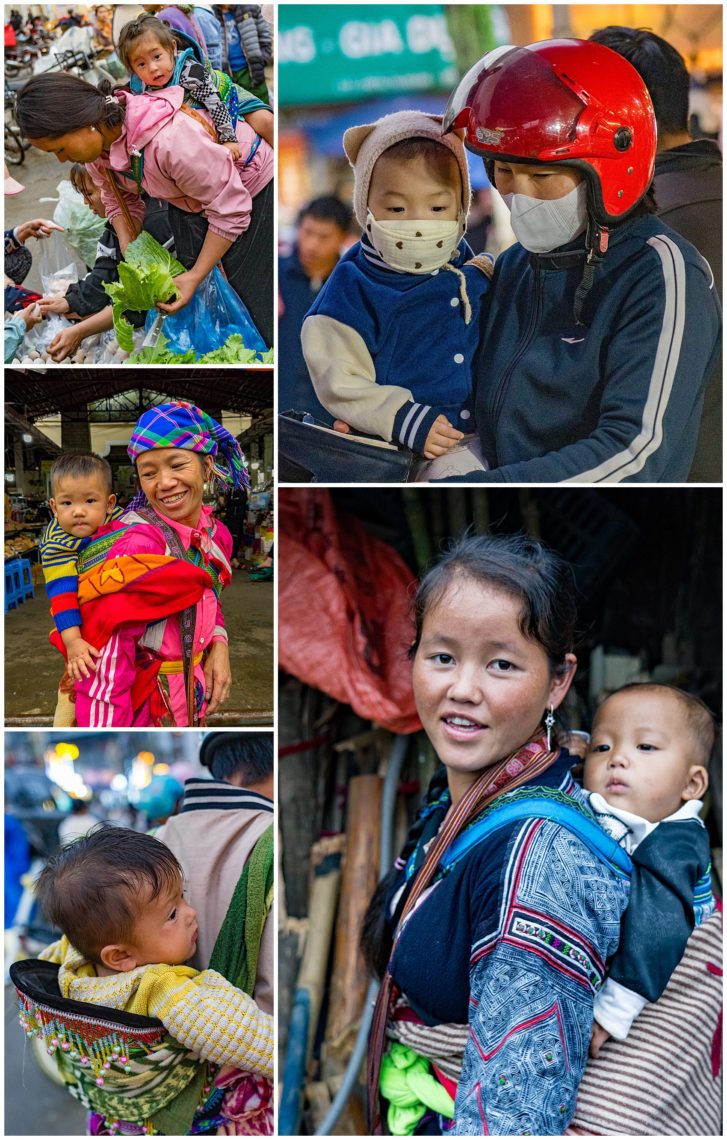
There are almost 100 million people in Vietnam, which ranks #16 in total world population. It is approximately 3/4 the size of California, which has 39 million people, so the population density is very high. It is considered a lower-middle income country by the World Bank but with a low cost of living. In Asia, it is ranked 16 among the richest countries in Asia, so there is a lot of buying power in this economy.
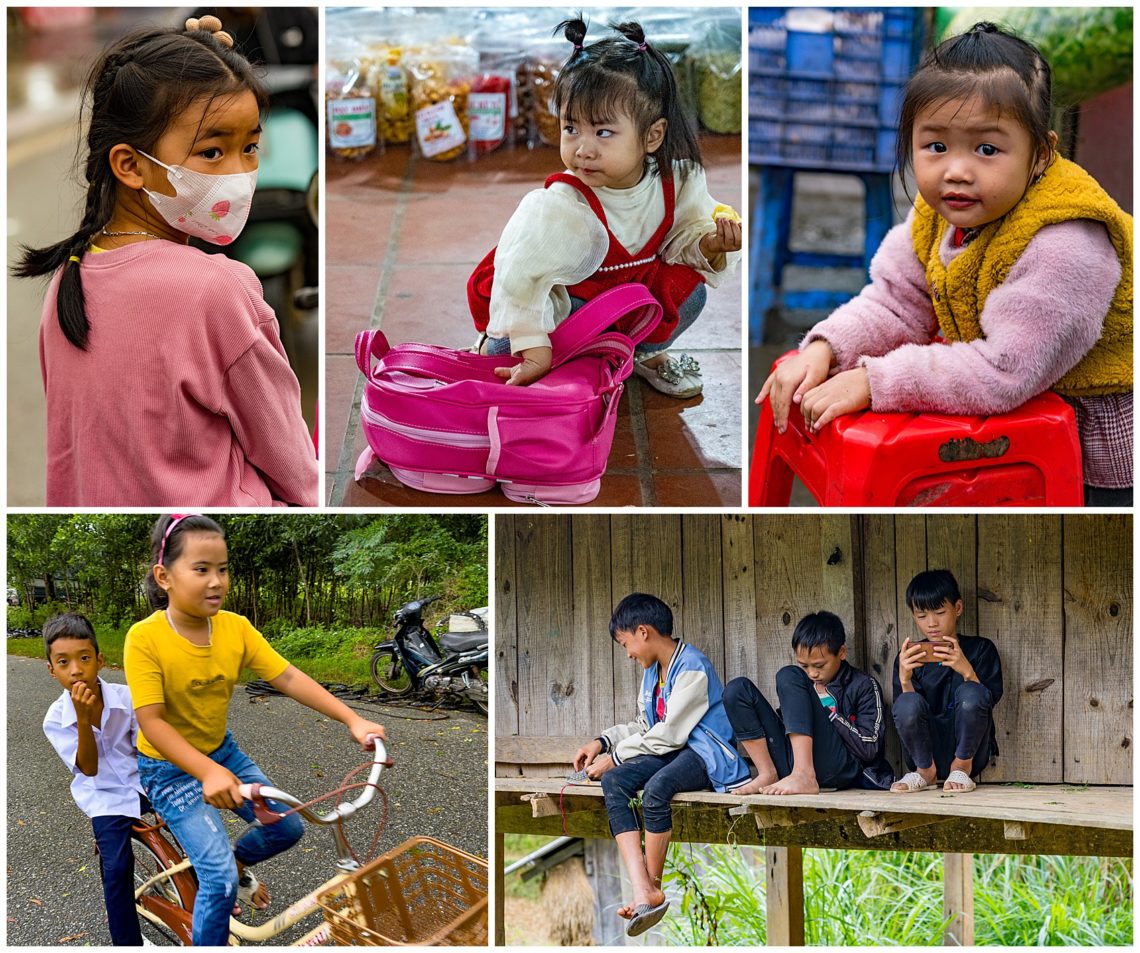
We are always amazed at the energy level of kids, who generally accompany their parents to work or daily activities. Kids these days are accustomed to getting their photos taken with mobile phones, so they are not shy in front of a camera.
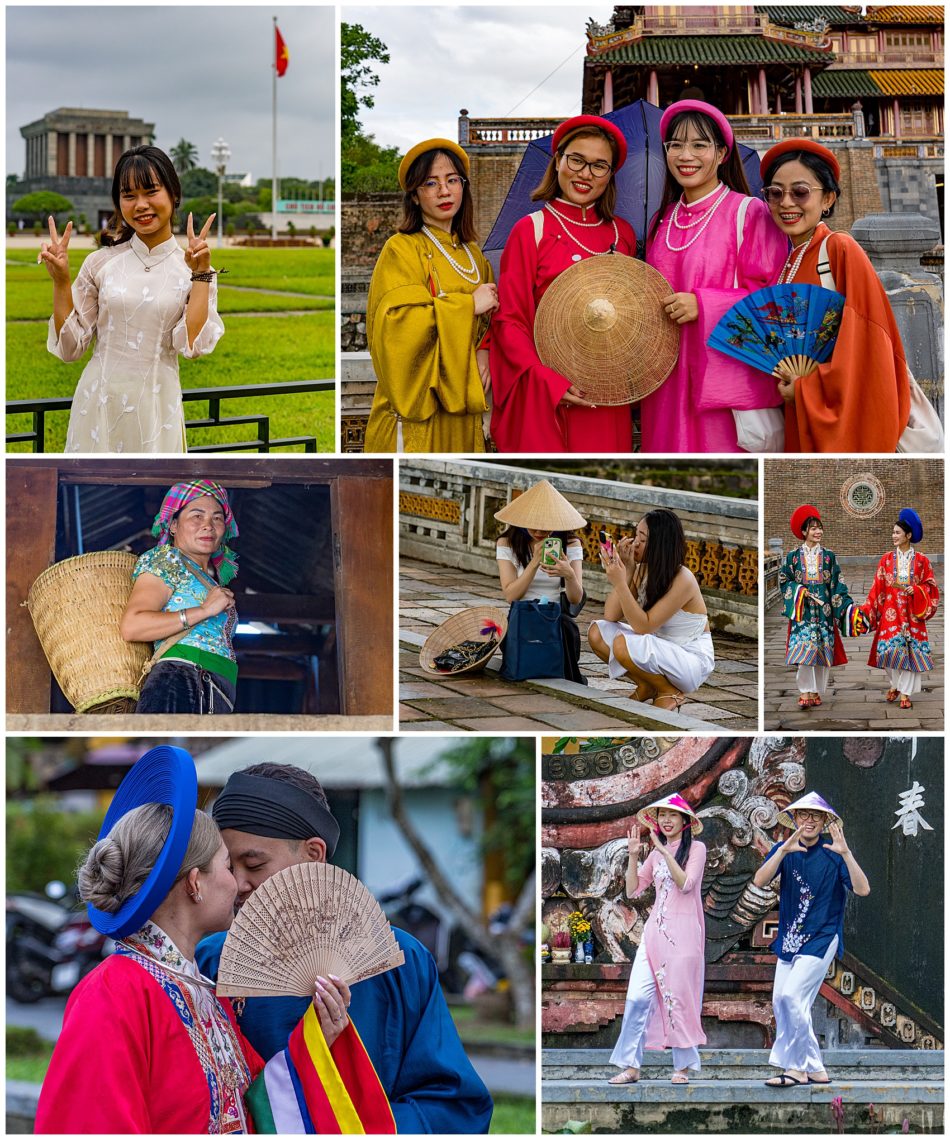
In Vietnam, a photographer does not need to hire models. The people generally enjoy getting their photos taken. Several photos above are taken at the Forbidden City in Hue, one in front of Ho Chi Minh’s mausoleum. The couple in the lower-right image were newlyweds on their honeymoon, and enjoyed performing for photographers.
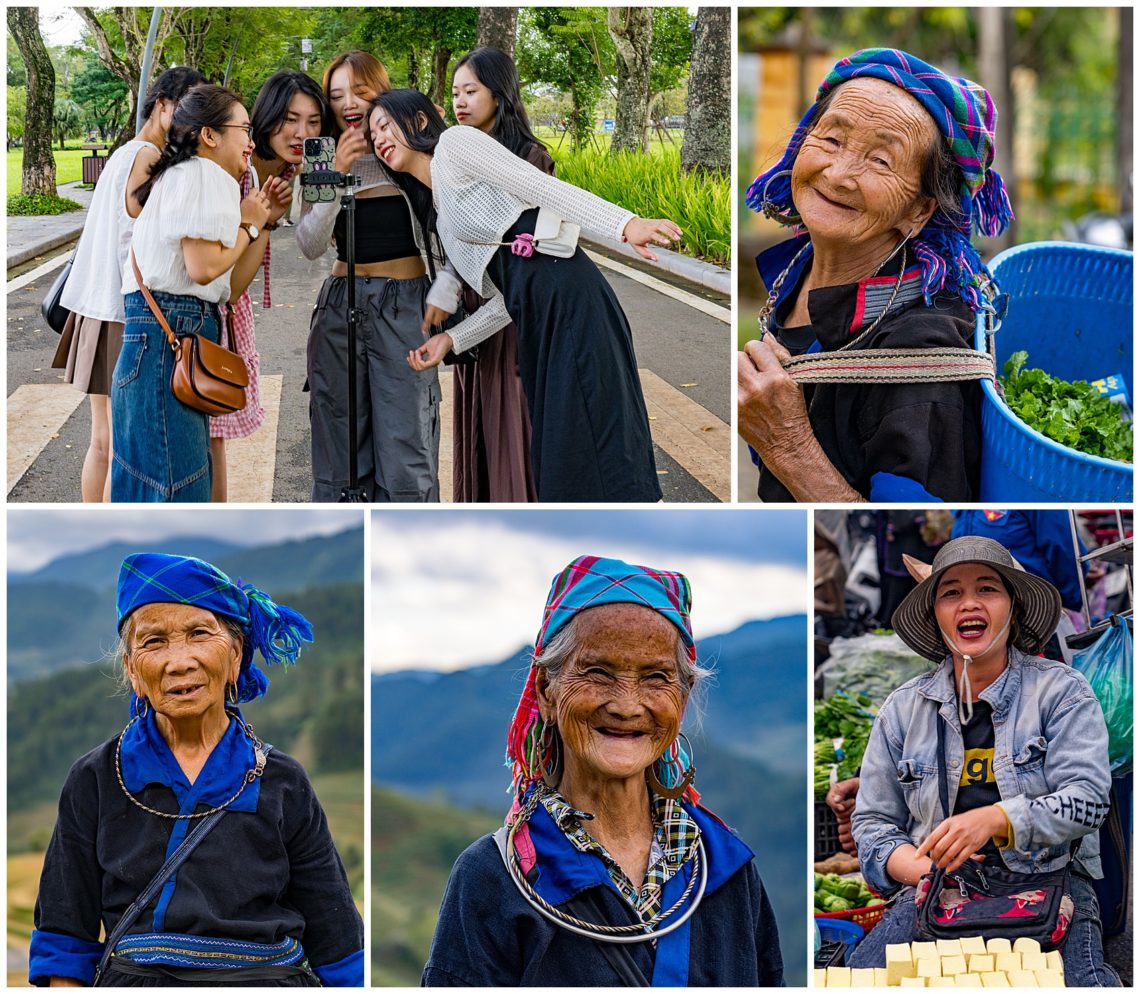
More photos of people in Sapa, North Vietnam. You can generally tell which regions they come from by the distinct color and patterns of their clothing. People love selfies, and at times hire professionals for instagram photo ops. Sapa is located only 20 km from the Chinese border, so if you turn left, you go to Sapa and if you turn right, you end up in China. 12 years earlier, we could only reach Sapa using the overnight train, though now there’s a new super highway.
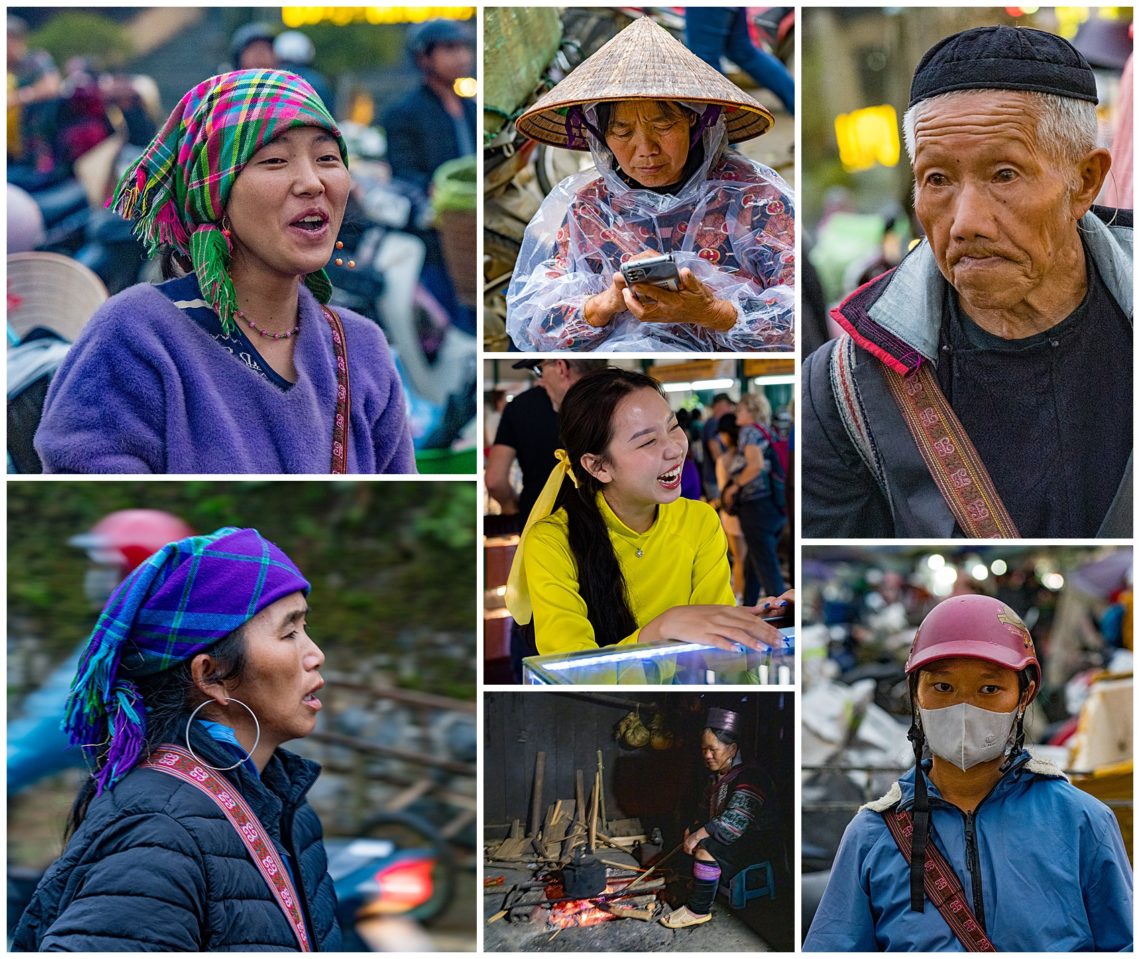
In general, it appears to us that the Vietnamese people were happy. Vendors in the market interact together, often making for interesting photos. More and more, they are glued to their mobile phones (top-center). Sy, our local tour guide, took us to her home to meet with her mother (lower-center) and family.
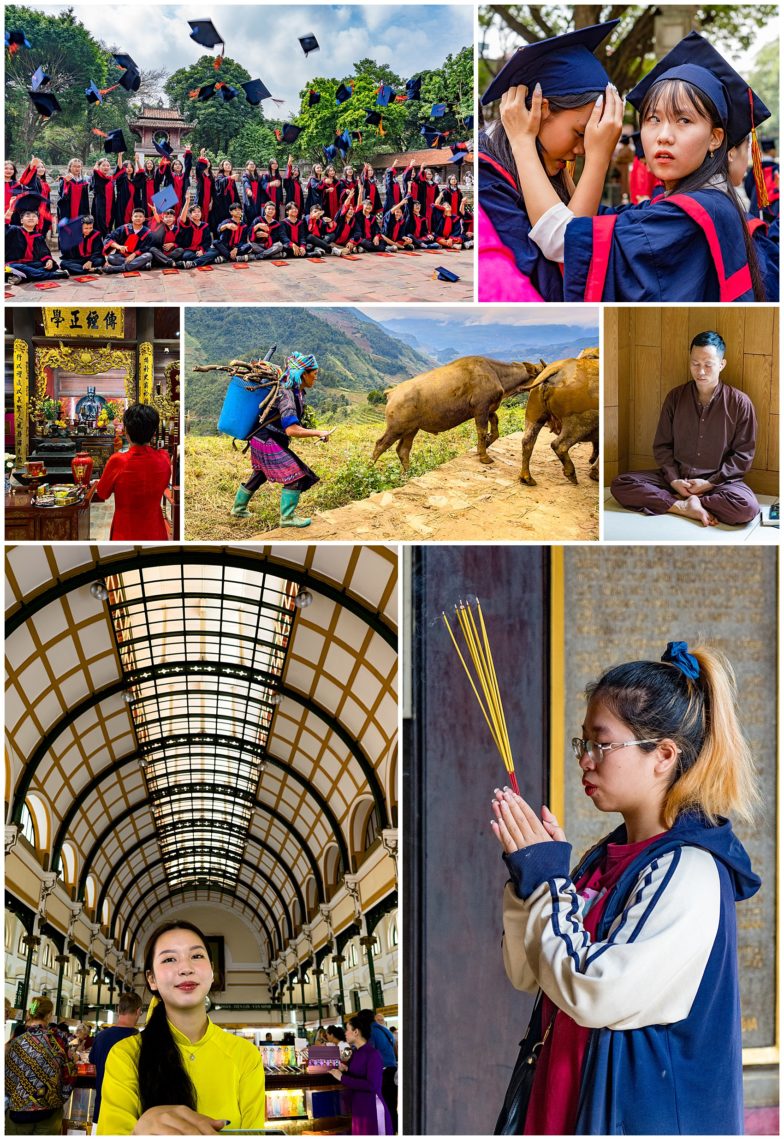
There were large numbers of graduating students at the Temple of Literature in Hanoi getting group photos taken with their classmates (top row) at a Confucius Temple which is the first national university in Vietnam. This is a special relic in Hanoi where students come to wish for good exam results. The post office (bottom left) is an architectural delight, where it is still available to buy postage stamps and souvenirs.
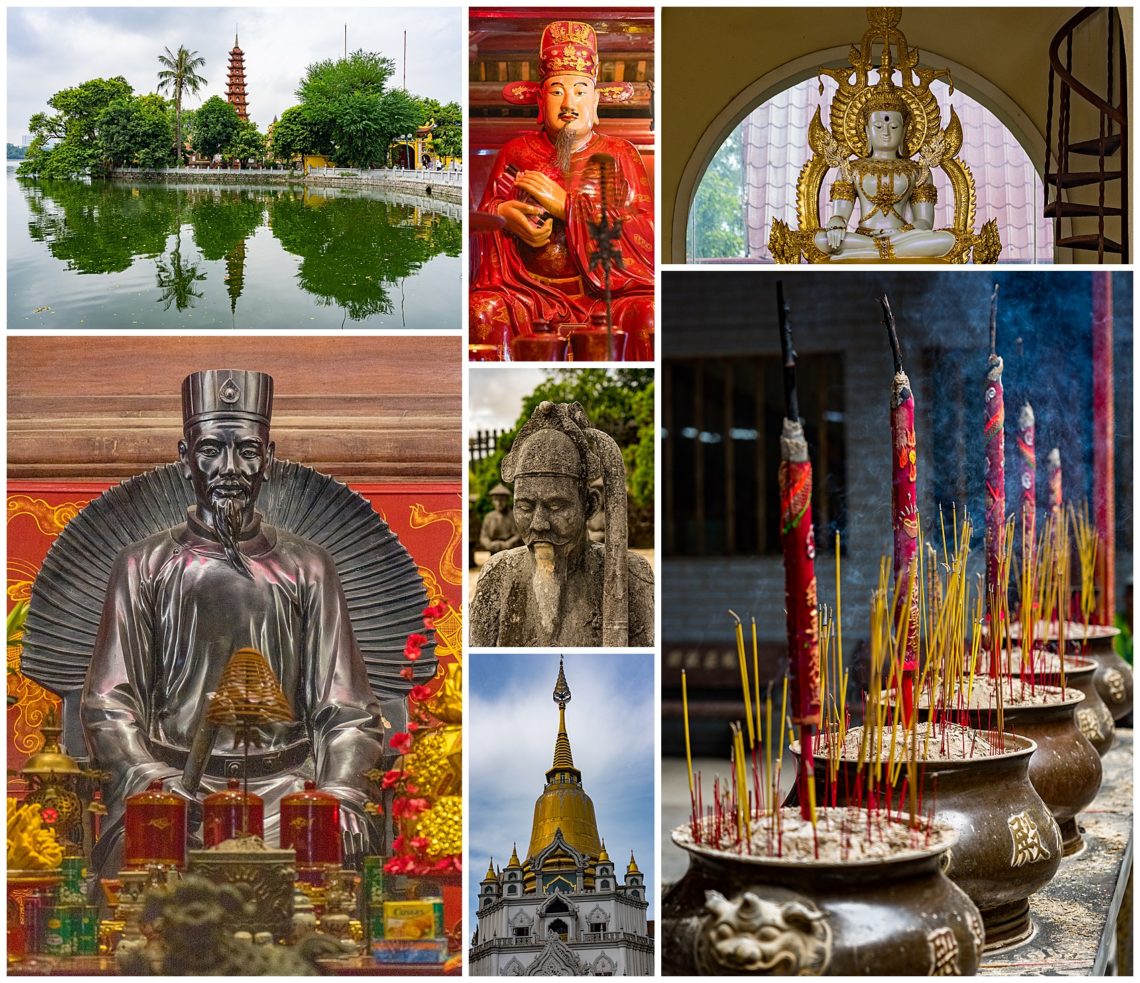
More images from various temples, including from the Chinese Temple known as Thinh Hou (bottom right) in Saigon.

Miscellaneous photos, including the Japanese Bridge in Hoi An (middle), which is the oldest bridge in Vietnam. There is quite a large brick making factory with numerous domed kilns lining the horizon on our river boat cruise (Upper left). At one of the lunch stops, we loved where the roosters lined up to get their photos taken (bottom-left). Whenever there was an opportunity for a reflection shot, we stopped (bottom-right and top-center). That is the nature of photography tours. We’re always chasing the light.